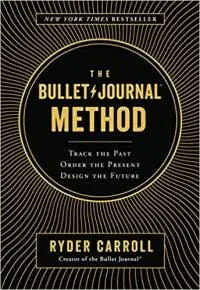Image via Cottonbro Studio
The luckiest writers get to rise in the morning, start writing when they feel like it, and then quit writing when they feel like it as well. They have nothing else to do with the rest of their day, other than chores around the house and any other everyday life things (including paying bills, going to the doctor, and all the un-fun stuff we have to do). But this type of writer is super rare; even the most successful among us have a lot going on, everything from day jobs to freelance gigs and other side hustles, in addition to all the above everyday life business. And if you’re like me, it can be tricky to keep on top of all this stuff, even when you’re using smartphone task and reminder apps, physical and/or digital calendars, daily planners, dry erase boards with chore charts, and beyond.
Maybe this doesn’t apply to you. Maybe you’ve got a system already in place that works for you. If so, that’s great. If it isn’t broke, don’t fix it, as the saying goes. But if you’ve been struggling to stay on top of your daily tasks, including your writing, then the practice of bullet journaling may be just the thing to infuse your days with some much needed structure. Again, it won’t work for everyone, but for those of us whose brains are just a bit scattered most of the time, bullet journaling is a lifesaver.
So What Is Bullet Journaling?
Essentially, bullet journaling is a method of creating your own daily planner completely from scratch and on a day to day basis, with minimal “pre-production.” But it can also be in a traditional journal where you write your thoughts, or a sketchbook for doodling, or a place to take notes during a lecture, or just about whatever you want. In many ways, the sky is the limit.
Let me put it another way: when you buy a daily planner in the store, the entire thing is already filled out and ready to go. Each calendar month has been printed, and there is space devoted for your daily tasks. So imagine you purchase a planner you think will work for you, but it turns out, after you’ve been using it for a while, that on average there isn’t enough space to accommodate all the things you need to get done in a day. Moreover, you find carrying around both a planner and a notebook for journaling/diary-ing is either cumbersome and/or frustrating, particularly if you only have so much room in your bag and/or it's hard for you to remember to grab both before leaving the house.
Wouldn’t it be nice if the planner wasn’t already pre-printed? Wouldn’t it be nice to have a completely blank page, or even several pages, at your disposal every single day, providing all the room you need for your daily tasks and thoughts, as well as for making journal/diary entries, so you only have to carry around/keep up with one notebook?
That’s bullet journaling in a nutshell.
My wife introduced me to this method of planning; she in turn learned about it through the YouTube series How To ADHD (attention deficit/hyperactivity disorder if you’re nasty), hosted by Jessica McCabe. She provides a solid introduction to the craft of bullet journaling, and why she feels it’s the best planning method for those with neurodiverse minds. I’m autistic myself with some pretty noticeable ADHD tendencies (though I only have an official diagnosis for the former). I often feel as though my brain is set to random, with my thoughts constantly bouncing to and fro. Bullet journaling definitely alleviates this and helps me stay on task. But of course, it isn’t just for the neurodiverse; you can be neurotypical and use this method too.
Here’s How To ADHD’s video. I recommend watching it (and the second video link below) because I feel it’s much easier to learn the system by watching someone explain it, rather than reading instructions (but I’ll provide some brief written instructions below).
In terms of setting up the journal, I went directly to the inventor of the method, Ryder Carroll. I personally appreciate his stark approach, but again, the overall design can be as extravagant as you please. Here’s Carroll’s introductory YouTube video for a better look at his setup:
Now, as indicated above, if you don’t feel like watching either of these videos, here are the most basic instructions for beginning your bullet journal:
- Get a notebook — Literally any notebook you want to use, though I’ve found those of the larger variety (I’m currently using an 8.5 x 11 inch notebook with bleed-proof pages) with dotted pages work best
- On the first page of the notebook, set up a Key — You’ll want to keep track of the symbols you use for your various entries. I use plain black dots for daily tasks and chores, a circle for events I’m attending, a star for important tasks/events, and so on, but the symbols can be whatever you choose.
- On the next few pages, create an Index — Anything you put in the journal later you’ll also write down here with the accompanying page number (see next step), for later reference. This is especially helpful for longer journal/diary entries, story ideas, sketches, etc. I’ve definitely had to pore through old journals trying to find some random thought I had that could make a good story, and lamented that I didn’t have an index or table of contents to help me find it.
- Number the subsequent pages — You can number every single page in one go, or do them in sets of 10 or 20, numbering the rest as you work through the notebook, but definitely number a good chunk of them before you begin journaling in earnest. This makes it much easier to immediately put your entries into the index, especially if you’re on the scatterbrained side like myself (if I don’t do the work beforehand, chances are I won’t do it at all).
- Use the next two to four pages for your Future Log — Divide your pages into horizontal columns, as many or as few as you’d like, though it’s good to give yourself plenty of space. If you start your bullet journal in May, write June near the top of the first column, July in the second, August in the third, and so on. Use these columns to list out anything you have coming up in the proceeding months, like concerts or birthdays, or anything you want to get done, like finishing the most recent draft of your novel. Be sure to note your Future Log and its page numbers in the Index.
- Start bullet journaling! — Beyond this initial setup, how you use the bullet journal is really up to you. I like to start each month by drawing out my own full calendar (not the sparse day letter and date number as Ryder Carroll does, but a traditional, straight up calendar). Obviously, you don’t have to do this if you don’t want to. If you desire, you can jump right in, put the day’s date at the top of the next available page, and start writing out everything you need to get done, your random thoughts, and so on.
Why Is Bullet Journaling Good For Writers?
 First — and this isn’t specific to writers but an advantage for everyone — research has shown that those who write things out by hand have a better time of remembering what they wrote than those who type information on a computer, tablet, or smartphone. Anecdotally speaking, it's much easier for me to remember to do things if I write them down versus type them out. This includes things like when a particular magazine will open for submissions, when my library books are due, the turn-in dates for my freelance work, and numerous other writerly tasks.
First — and this isn’t specific to writers but an advantage for everyone — research has shown that those who write things out by hand have a better time of remembering what they wrote than those who type information on a computer, tablet, or smartphone. Anecdotally speaking, it's much easier for me to remember to do things if I write them down versus type them out. This includes things like when a particular magazine will open for submissions, when my library books are due, the turn-in dates for my freelance work, and numerous other writerly tasks.
Moreover, because of this link between handwriting and memory, if you jot down an idea—be it the plot of a short story or a scene in your novel—your recall rate will drastically improve, and you'll actually remember to do something with the idea, rather than forgetting about it and letting it languish. And because you put everything you write down in your index, your idea will be super easy to find later. Same with any journal or diary entry that, upon later reflection, you realize would make a great piece of writing, or, if you’re artistically inclined, a random sketch you made at three o’clock in the morning that might generate a narrative (like, say, you doodled a wicked monster that could star in a horror story).
Bullet journaling can also help you keep on top of making diary entries every single day, either by putting it in with your daily tasks or designating space for entries underneath your task section (or both, as I do). Journaling/keeping a diary/whatever you want to call it is an important practice for honing your craft (just ask Joyce Carol Oates, Anaïs Nin, and David Sedaris, among others), and doing it within the context of bullet journaling makes it much easier to do every single day.
Last but not the least, the ability to better organize your day, including making time for writing, is essential. Even if you’ve never struggled to hit that daily writing goal, you’d be amazed how good it feels to check it off your tasks over a span of several days, weeks, and even months. Not to mention writing it down in the daily tasks section—at least for me—practically guarantees it will get done. And even if, for whatever reason, it doesn’t, simply writing “Work on novel” for the following day’s tasks sends a me a reassuring mental message: “I may not have made any progress today, but I’ll get back on the horse tomorrow.” In this way, I'm never unmindful of the work; I'm always reminded to stay on my toes and, at the very least, think about my writing. And I feel that as long as you're at least thinking about, you're setting yourself up for success.
Buy The Bullet Journaling Method at Bookshop or Amazon

About the author
Christopher Shultz writes plays and fiction. His works have appeared at The Inkwell Theatre's Playwrights' Night, and in Pseudopod, Unnerving Magazine, Apex Magazine, freeze frame flash fiction and Grievous Angel, among other places. He has also contributed columns on books and film at LitReactor, The Cinematropolis, and Tor.com. Christopher currently lives in Oklahoma City. More info at christophershultz.com









